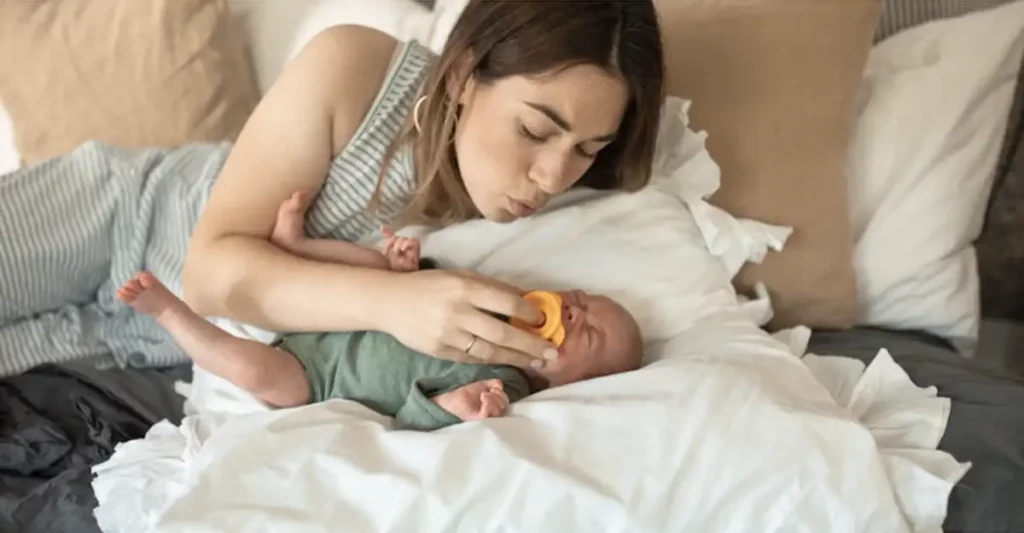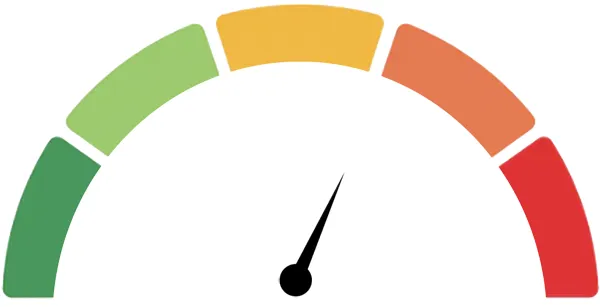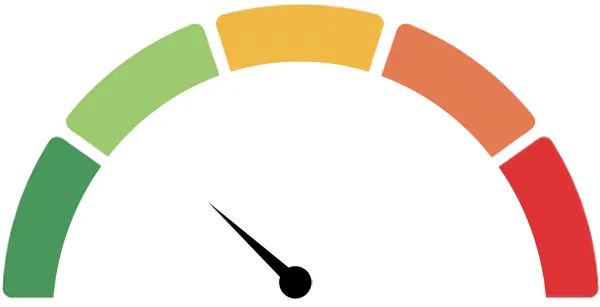Co-sleeping can be a beautiful way to bond with your baby, but like many parenting choices, it’s not without controversy. After testing different setups and hearing from other families, I wanted to break down the real pros and cons of co-sleeping, so you can make an informed decision that feels right for your family.

At its core, co-sleeping means sleeping close to your baby, but there are a few different ways you can practice it.
Pros and Cons of Co-Sleeping with Baby
From full bed-sharing to simply having a crib nearby, co-sleeping can look different for every family. Here are the pros and cons of each co-sleeping approach.
1. Bed-Sharing: Pros and Cons
![Risk Meter - Very High [Not Safe]](https://babyslittleplace.com/wp-content/uploads/2025/04/risk-meter-very-high-not-safe.webp)
Bed-sharing is the practice that everyone first thinks about when hearing about co-sleeping with a baby. It is a common form of co-sleeping, but also the most controversial. While it can help with breastfeeding and bonding, it does carry the highest safety risks.
⚠️ Important safety tip: If you choose to bed-share, never place your baby between two adults. The safest position is beside the mother, on the side away from the father. Always follow safe sleep guidelines: a firm mattress, no pillows or loose blankets, and never co-sleep if you’re overly tired or under the influence of medication, alcohol, or substances.
A simple way to minimize risk is to push the bed against the wall and place your baby on the wall side—but only if there’s no gap between the bed and the wall. Alternatively, use a toddler bed guardrail.
✅ Pros
- Encourages bonding and nighttime snuggles
- Helps babies and parents get more sleep overall
- Makes breastfeeding easier
- Doesn’t require an additional bed
- Budget-friendly solution
❌ Cons
- The riskiest form of co-sleeping
- Not recommended by the American Academy of Pediatrics (AAP)
- Higher chance of accidental suffocation or entrapment
2. In-Bed Co-Sleeper: Pros and Cons

An in-bed co-sleeper is a structured baby lounger that you can put on your bed to create a separate space for your baby. This option provides a safer way to keep your baby in your bed during the night, as the raised sides help prevent parents from accidentally rolling over into it.
✅ Pros
- Reduces the safety risks for those who want to share a bed with their baby
- Keeps baby within reach but in a separate space
- Some models have added features like electronic units with preloaded lullabies or nightlights
- Portable and great for travel
- Great for daytime naps
❌ Cons
- Best for only the first few months
- It does not work as a long-term solution
- Not approved by AAP as a safe overnight sleeping space for infants
3. Bedside Co-Sleepers: Pros and Cons

Bedside co-sleepers (also called side-sleeping bassinets or cribs) offer one of the safer ways to co-sleep, but you must choose the right type.
Not all co-sleepers are created equal. The safest options are those made with soft fabric and breathable mesh sides. Traditional wooden cribs with drop-side mechanisms are no longer considered safe due to the risk of entrapment!
In modern co-sleepers, the side panel usually unzips and folds down, rather than using a mechanical drop-side. When securely attached to the parent’s bed and properly aligned, they create a connected but separate sleep space for your baby.
⚠️ Safety Note: To keep the bedside co-sleeper safe, you must securely attach it to the adult bed with no gaps between the baby’s sleep surface and your mattress. The surfaces should be at the same height. Also, keep your bedding away from the baby’s area to prevent suffocation risks.
While this setup is safer than bed-sharing or in-bed loungers, it’s still not without risk. There’s a small possibility that a parent’s blanket could enter the co-sleeper or that the baby could roll into the parents’ bed.
✅ Pros
- Allows for safer proximity without full bed-sharing
- Baby is within arm’s reach for easier feeding and soothing
- Baby sleeps in her own space, promoting healthy sleep habits
- Many models are multi-use: they can function as a co-sleeper, a standalone bassinet, or a travel crib
- Considered a SIDS-reducing setup when used properly
❌ Cons
- More expensive than in-bed sleepers or snuggle nests
- Bulky compared to portable bassinets
- Still carries some safety risks, though significantly lower than bed-sharing
4. Room-Sharing with a Separate Crib or Bassinet: Pros and Cons
![Risk Meter - Very Low [The Safest]](https://babyslittleplace.com/wp-content/uploads/2025/04/risk-meter-very-low-safe.webp)
This is the most widely recommended co-sleeping method by organizations like the AAP (American Academy of Pediatrics). In this setup, the baby sleeps in a standalone crib or bassinet in the parents’ room—ideally within arm’s reach.
✅ Pros
- Baby has her own safe sleeping space
- Still allows for easy check-ins and feeding
- Encourages independent sleep habits from the start
- More comfortable as baby grows
- It may be the most cost-effective in the long-term since cribs can be used later in the nursery
- Strongly associated with a lower risk of SIDS
❌ Cons
- No all-night snuggles
- Slightly less bonding than other co-sleeping types
- Requires parents to sit up or get up to tend to the baby during the night
Final Thoughts
Co-sleeping can be comforting and convenient, but it’s not one-size-fits-all. Some families thrive with bed-sharing (done as safely as possible), while others prefer a bedside co-sleeper or a crib just steps away. The key is choosing what feels right for your family and ensuring it’s safe.
Still deciding? You might find these helpful:
